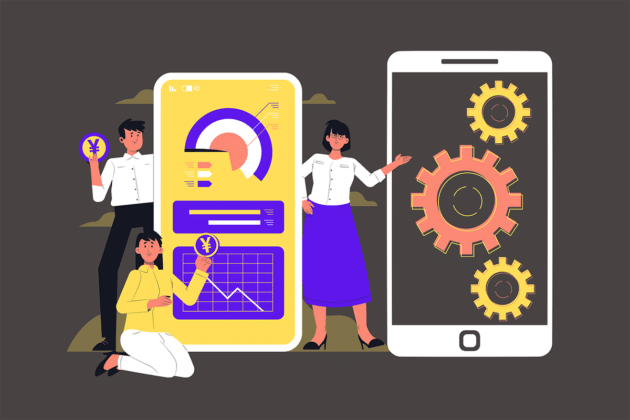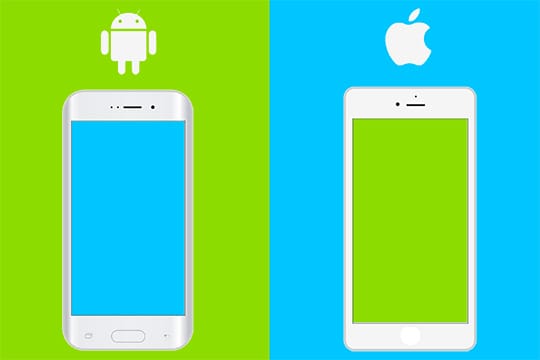The usage of mobile apps has grown over the last few years, as customers can access them anywhere, anytime. Due to mobile app development, businesses wish to increase their exposure, boost customer loyalty, and strengthen brand recognition. Many mobile application development services are looking for ways to reduce the cost of app development without damaging the quality of the application.
Mobile apps enhance the customer’s experience with a brand by letting them interact with it within their own space and providing them with the benefit of interacting with it within their own space. Branding is the purpose of mobile applications. Mobile products provide a platform for showcasing your brand and what you can offer as a company. It’s a bit like making your app part of your users’ personal space. By being accessible from anywhere with their mobile device, they can allow the app to thrive and find its niche.
Nonetheless, good things can be hard to come by at an affordable price. Yet, the cost of developing an app for a company’s brand can serve as a deterrent to a company. When you take specific measures to reduce unnecessary costs, the cost of developing an app doesn’t need to be excessive. You may be wondering how you can reduce the development costs of your mobile app without compromising quality. Here are some measures that you can apply to cut down the cost of app development.
Knowing the costs of mobile app development

Before reducing the cost part, let us see what is causing the reason for reducing the app development costs. Understanding what factors affect the cost of a product in the first place is vital to learning how to create a mobile app efficiently. The following factors can influence price ranges:
Recommended for you: Why Mobile Apps are Gaining Importance in Healthcare Sectors?
Platforms.
Do you need a native iOS or Android app, or do you need both? Maybe your project is better suited to a cross-platform approach? The platform you choose is one of the factors that affect the cost of your app development. There are many apps which is available in the play store but not an in-app store. It is because those app development companies choose only the play store or Android for releasing their app. So, if you want to release your app on both platforms, make sure you have the budget for it.
Tools, technologies, integrations.
It is widely known that cloud platforms and tools influence the cost of technology, as do third-party system integrations, development kits, and high-end technology. You can choose between a machine learning program or an augmented reality program.
Scope.
It usually takes more money and time for developers to develop more complex functionality and a broader scope.
Vendor.
The price is influenced by the rates and collaborative strategies of your vendor.
Scale.
Are you reaching a large audience? Where are you based? Who are you becoming? Your app’s type and the nature of your services will determine how much power you need.
1. Development of an App Process with Efficient planning

The mobile app’s ultimate goal is to provide the best possible user experience. Creating a mobile app takes several iterations and modifications, but the process is costly and complex to perfect; the price of a developed app will increase with each revision. Weighing potential options together and weighing the pros and cons is a normal part of thinking through alternatives and increasing customer engagement. Still, we should consider the pros and cons of each option equally. When the planning is done, you will get a clear-cut idea of how much the app development will cost; it will be easier to understand which parts can help you save some amount when you have an idea of the plan and process. Reduce the number of changes you need to make by choosing the features that improve customer experience.
2. Make use of libraries, frameworks, and third-party services.

Development is made more accessible by a wide range of open-source tools, frameworks, libraries, and services. Building custom components is no longer necessary to add standard functionality to your app. By integrating existing solutions into your app, you can save on development costs by tweaking and customizing them as needed. If you want to integrate voice communication in your app, you should use a custom mobile app development company service instead of creating your solution. Amazon Web Services offers AI capabilities through its cloud platform. Google Cloud’s AI system, Google Vision, offers similar capabilities. Additionally, you can add ready-to-use components to your user interfaces, such as graphics and other visualization tools.
3. A rough idea of the application

Developers should provide a general description of the app about what it should do and what it should be expected to do. Additionally, it would be best to discuss why your target audience will buy your concept. If you would like to have the app deployed on multiple platforms, then plans that earlier too. It would be best to plan whether you would require a native or hybrid application since there are significant differences in cost. When you get a rough idea of your mobile application, it will be easier for you to understand the cost of making the application and reduce the cost without impairing the quality of your app.
4. What platform to choose for your app

It would help if you decided which database, you would use when starting a mobile development project. If you are attempting to determine your audience, you need to consider users’ preferences, location, design elements, and project objectives. If you want a consumer app that covers a broad audience right from the start, iOS and Android can be good choices. Following this point will save you up to 70% of time and money if you choose cross-platform development. This method is one of the techniques used most often to reduce the costs of app development. For both iOS and Android devices.
You may like: How to Build a Great Mobile App Development Team?
5. Plan out the features carefully

To implement a successful project, the developer must prioritize the features correctly. Keeping costs under control and ensuring a rapid time-to-market are excellent benefits. Before you determine what functionality is needed in the first scope, you need to have a working application on the market. You can test your app in the field and iteratively refine it based on the feedback you receive. You can save a lot of time and money by removing features your customers do not need.
6. Choose an MVP to start with

As mentioned in the previous tip, this strategy is related. It’s like a mobile application, except instead of a complete product, we’re talking about an MVP – a bare-bones product that gives early adopters and investors just enough features. Such a strategy would be helpful to an entrepreneur, startup, or startup company looking to try out an idea before committing to developing a market-ready product. If you are building a new concept and are unsure if the app will succeed, you can opt to start with MVP development and invest only a small amount of money at first. Once you have a basic version, you will know if the MVP sticks.
7. Sketch the final version of the product

Even though coding is an integral part of successful application development, developers need to clearly understand what customer interfaces or applications they will need. App developers are more likely to understand what the developer expects when they hand over an application sketch since it gives them a framework to define how the app will appear and function. The developer will develop a mobile app at a reduced price because the application will require no unnecessary rework. When a final sketch of the application is made, you can decide which area to cut short and prioritize. And then, you can reduce the cost by removing unnecessary features and actions.
8. Don’t rush to meet deadlines.

Developing a working version of a product shouldn’t entail causing developers to be pushed into that effort. It is possible that being overly eager may have the opposite effect, resulting in a lousy product or one that does not work as intended by the customer. As developers scramble to keep up with deadlines, they often sacrifice quality in the process. The process of correcting those errors will take much longer than the time available. It will be difficult for the customer to devote enough time to all of the finer details. So, give you developers their space and help them cope with the pace rather than pushing them to the deadline. Your main goal should be to provide the best mobile application and not releasing it at the given time.
You may also like: 8 Stages/Phases of Mobile App Development Life Cycle.
Conclusion

The development of a mobile app costs money, but on the other hand, using the right team and taking the right approach can potentially save money without sacrificing quality. The best methods to implement your project and get the best return on investment are following appropriate technology choices, observing guidelines, optimizing functionality, and planning in detail.
This article is written by Prashant Pujara. Prashant is the CEO of MultiQoS Technologies Pvt. Ltd., a leading web and mobile app development company specialized in android and iOS app development services. His responsibilities include overseeing business and delivery operations, as well as strategic planning and developing future road maps. Follow him: Twitter | LinkedIn | Facebook | Instagram.
 This article is written by Prashant Pujara. Prashant is the CEO of
This article is written by Prashant Pujara. Prashant is the CEO of 




